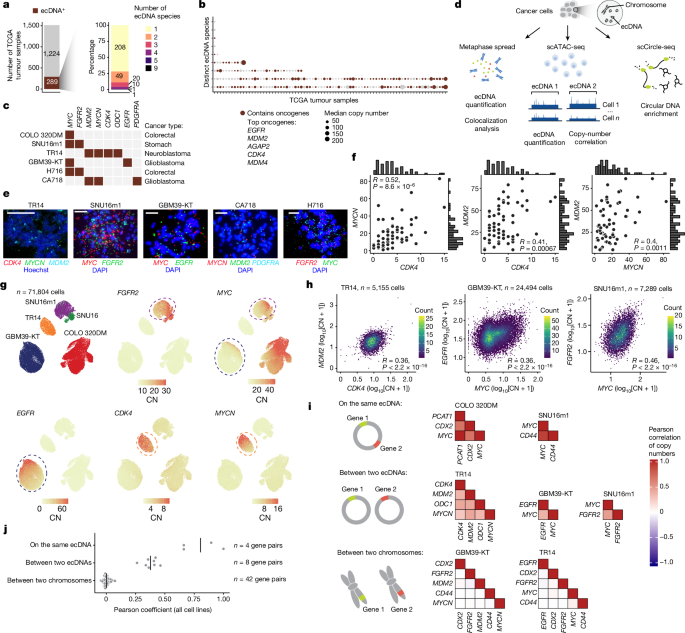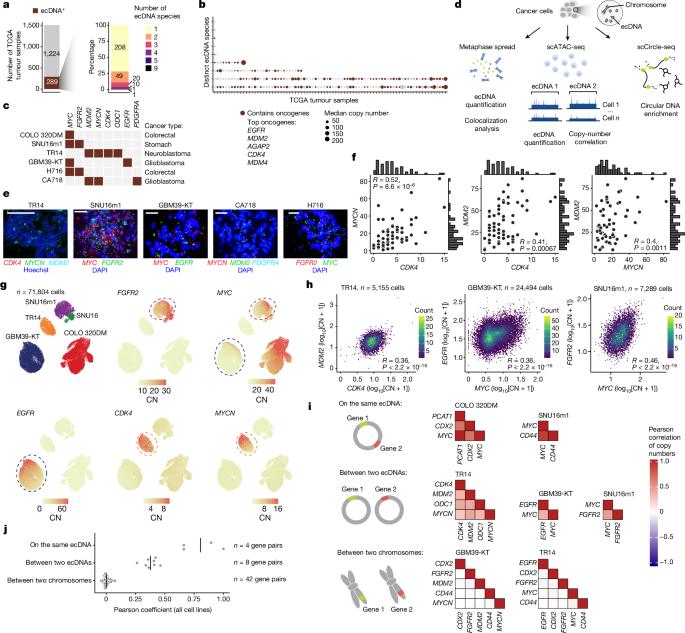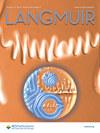Coordinated inheritance of extrachromosomal DNAs in cancer cells
IF 3.7
2区 化学
Q2 CHEMISTRY, MULTIDISCIPLINARY
引用次数: 0
Abstract
The chromosomal theory of inheritance dictates that genes on the same chromosome segregate together while genes on different chromosomes assort independently1. Extrachromosomal DNAs (ecDNAs) are common in cancer and drive oncogene amplification, dysregulated gene expression and intratumoural heterogeneity through random segregation during cell division2,3. Distinct ecDNA sequences, termed ecDNA species, can co-exist to facilitate intermolecular cooperation in cancer cells4. How multiple ecDNA species within a tumour cell are assorted and maintained across somatic cell generations is unclear. Here we show that cooperative ecDNA species are coordinately inherited through mitotic co-segregation. Imaging and single-cell analyses show that multiple ecDNAs encoding distinct oncogenes co-occur and are correlated in copy number in human cancer cells. ecDNA species are coordinately segregated asymmetrically during mitosis, resulting in daughter cells with simultaneous copy-number gains in multiple ecDNA species before any selection. Intermolecular proximity and active transcription at the start of mitosis facilitate the coordinated segregation of ecDNA species, and transcription inhibition reduces co-segregation. Computational modelling reveals the quantitative principles of ecDNA co-segregation and co-selection, predicting their observed distributions in cancer cells. Coordinated inheritance of ecDNAs enables co-amplification of specialized ecDNAs containing only enhancer elements and guides therapeutic strategies to jointly deplete cooperating ecDNA oncogenes. Coordinated inheritance of ecDNAs confers stability to oncogene cooperation and novel gene regulatory circuits, allowing winning combinations of epigenetic states to be transmitted across cell generations. Cooperative species of extrachromosomal DNAs are coordinately inherited through mitotic co-segregation.


癌细胞中染色体外 DNA 的协调遗传
染色体遗传理论认为,同一条染色体上的基因会一起分离,而不同染色体上的基因则各自独立1。染色体外 DNA(ecDNA)在癌症中很常见,通过细胞分裂过程中的随机分离,驱动癌基因扩增、基因表达失调和肿瘤内异质性2,3。不同的 ecDNA 序列(称为 ecDNA 物种)可以共存,从而促进癌细胞中分子间的合作4。 目前尚不清楚肿瘤细胞内的多个 ecDNA 物种是如何在体细胞世代间进行分类和维持的。在这里,我们展示了合作的 ecDNA 物种是通过有丝分裂共同分离协调遗传的。成像和单细胞分析表明,在人类癌细胞中,编码不同致癌基因的多个 ecDNAs 同时存在,且拷贝数相关。在有丝分裂过程中,ecDNAs 协调地进行非对称分离,导致子细胞在任何选择之前,多个 ecDNAs 的拷贝数同时增加。有丝分裂开始时分子间的接近性和活跃的转录促进了ecDNA物种的协调分离,而转录抑制则减少了共分离。计算建模揭示了ecDNA共分离和共选择的定量原理,预测了在癌细胞中观察到的分布情况。ecDNAs的协调遗传使只含有增强子元素的特化ecDNAs得以共同扩增,并指导治疗策略,以共同清除合作的ecDNA致癌基因。ecDNAs的协调遗传赋予了致癌基因合作和新型基因调控回路的稳定性,使成功的表观遗传状态组合能够在细胞中代代相传。
本文章由计算机程序翻译,如有差异,请以英文原文为准。
求助全文
约1分钟内获得全文
求助全文
来源期刊

Langmuir
化学-材料科学:综合
CiteScore
6.50
自引率
10.30%
发文量
1464
审稿时长
2.1 months
期刊介绍:
Langmuir is an interdisciplinary journal publishing articles in the following subject categories:
Colloids: surfactants and self-assembly, dispersions, emulsions, foams
Interfaces: adsorption, reactions, films, forces
Biological Interfaces: biocolloids, biomolecular and biomimetic materials
Materials: nano- and mesostructured materials, polymers, gels, liquid crystals
Electrochemistry: interfacial charge transfer, charge transport, electrocatalysis, electrokinetic phenomena, bioelectrochemistry
Devices and Applications: sensors, fluidics, patterning, catalysis, photonic crystals
However, when high-impact, original work is submitted that does not fit within the above categories, decisions to accept or decline such papers will be based on one criteria: What Would Irving Do?
Langmuir ranks #2 in citations out of 136 journals in the category of Physical Chemistry with 113,157 total citations. The journal received an Impact Factor of 4.384*.
This journal is also indexed in the categories of Materials Science (ranked #1) and Multidisciplinary Chemistry (ranked #5).
 求助内容:
求助内容: 应助结果提醒方式:
应助结果提醒方式:


